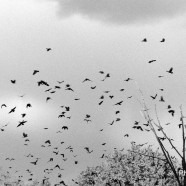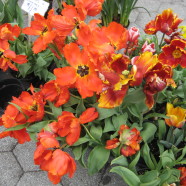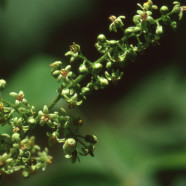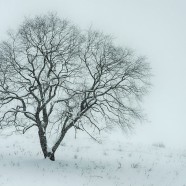Crows in the City: Should We Run?
More and more, cities across the US are being discovered by crows as the perfect place for a slumber party. Crows love to roost in cities on winter nights. And the crows congregate in vast numbers–some roosts are made up of hundreds of thousands of birds. They’re impossible to ignore. When twenty thousand birds are swooping over your house, it can make you a little…well…nervous. Every time I see dark clouds of crows swirling overhead I’m reminded–who could not be?–of the movie. The movie. You know the one I mean, right? Admit it, the thought crosses your mind every time you see a flock of...
Read MoreRed Orange Yellow Day
It’s January. The dead of winter. Long ago, I had a terrific boss who insisted that every year the staff celebrate Red Orange Yellow Day. I’m not sure if he made it up, or if there really is such a thing. The celebration was always held in the third week of January, a month famous for gray skies, dirt-speckled snow, and cold toes. I guess the idea was to brighten everyone up through the mid-winter blues, and it certainly was effective. Every on the staff wore the requisite colors and shared a pot-luck lunch of salsa, ziti, orange juice, rainbow sherbet, lemon meringue pie and what-have-you....
Read MorePoison Ivy: Spring Flowers
“Poison ivy” and “flowers” are words that don’t seem to fit in the same sentence. Yes. Poison ivy has flowers. Dainty and delicate, lovely flowers that, yes, will give you a lovely rash if you’re allergic to urushiol, the irritating chemical found in almost all parts of the poison ivy plant. Poison ivy flowers are rich in nectar and very attractive to bees. Fortunately for honey-lovers, there’s no urushiol in poison ivy nectar or pollen, so eating poison ivy honey is not a problem. In fact, if you like honey, you’ve probably eaten poison ivy nectar many times....
Read MoreBranching Out
The only thing more beautiful than a tree in full leaf is a tree with bare branches. The branching pattern of this tree—of any tree—is beautiful, complex, and anything but accidental. There’s a reason for every twist and turn in every smallest twig. It’s all driven by the search for sunlight. Each leaf has to maximize the amount of sun it receives in order to make food for the tree, and therefore the tree has to spread out as much as possible so the leaves don’t shade each other. But spread too wide and the branches will bend and break. The tree also has to grow upwards, to get above any...
Read More








Recent Comments